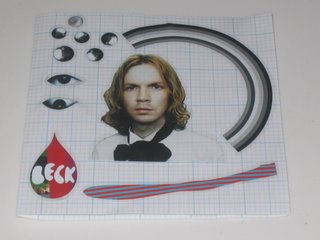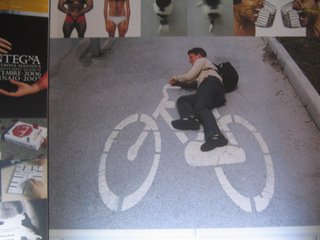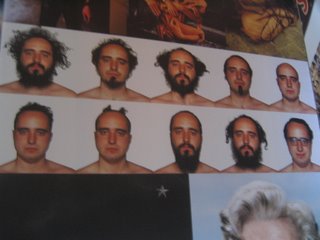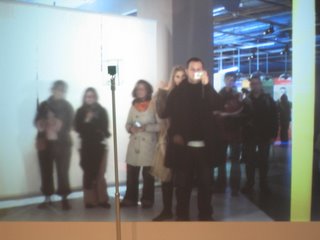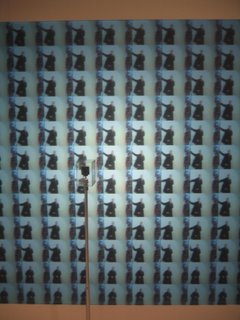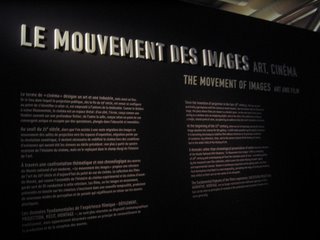 How de we find those rare nuggets of insight or other creative thought starters. How do we dig deeper into either the consumer, within the cooperation, into the product, or tap into a broader cultural context?
How de we find those rare nuggets of insight or other creative thought starters. How do we dig deeper into either the consumer, within the cooperation, into the product, or tap into a broader cultural context?
How de we equip ourselves with enough knowledge to truly understand was goes on in the Herd?
What do we need to know about those brand communities to dive into the new vast world of transmedia planning?
How do we look at both advertising and media planning at the same time?
How do we truly disrupt the marketplace?
How do we add new knowledge, if the focus groups and the piles of data doesn’t do the job (with no intentions to rebel against the more data-driven rigour)?
I’m looking for the planning behind the planning out of a belief that real life experience and a more personal involvement close to where the action is at, can get us new perspectives to the problem solving we are facing.
Then a little while ago I came a cross Wikipedias explanation of Method Acting and intuitively felt there was something in that.
The fact that it was a possibility to give a little “Actors Studio meets Lee Strasberg meets Marlon Brando, Robert De Niro & Al Pacino coolness” to the planning profession was no downside. Even the fact that it could provide a new set of explanatory tools for the daily merits of the planner - in a dinner party small talk perspective - wasn’t bad either.
I simply tried to replace acting/actors with planning/planners, characters with brands and performance with communication. The definition is then as goes:
Method Planning is a planning technique in which planners try to replicate in real life the emotional conditions under which the brand operates, in an effort to create a life-like, realistic communication. "The Method" typically refers to the generic practice of planners drawing on their own emotions, memories, and experiences to influence their portrayals of brands.
Next up was to try to come up with some tools and tactics to come closer to a TO-DO list for Method Planning.
This could be the first 10 techniques of Method Planning:
1. Do a Cindy Sherman!
Become the target group, dress and behave like them. It’s not observing but experiencing through an active involvement in the crowd. I, realize this can be a bit hard and very weird if let’s say - you are middle aged male planner searching for the golden nuggets amongst young female cosmetic users in Asia– but probably still worth a try. If Cindy can, you can.
(See more on the woman that can make even David Bowie “chameleon envious” here: http://www.cindysherman.com/ or http://en.wikipedia.org/wiki/Cindy_Sherman)
2. How may I help you?
Let’s forget all the explorations on how our messages, propositions, promises, reasons to believe fit into the realms of a specific crowd. Let’s instead find the utility angle. How could a brand improve our daily lives? What’s interesting? What’s helpful? What’s could be improved? Are there any existing online/offline utilities that could need the scaling from partnering with big brands?
3. La Source
How did they hear about a certain phenomenon or brand? It’s all about drawing a media pattern recognition map. How does the specific crowd work? What are the dynamics? Where are the touchpoints where the brand is welcome and effective? And where does the crowd want the brand to keep out and decide and discuss for them selves?
4. Lap observing
A really simple way of getting to know your target group, market, product is to simply spend a day or two in the production facilities, in the back of police car (I remember one specific law enforcement campaign as the result of a creative team doing just this), hang out with a certain crowd, be part of the new product development for a little while, do a stand-in for the personnel in a retail outlet etc. etc. This can be done more or less biased having a set of questions or totally non-interrupting.
The Staufenberger Repository had a great example of a creative team doing a project with this intention (see more here http://staufenberger.typepad.com/repository/2007/01/ollie_and_janso.html and http://www.spendadaywith.blogspot.com/)
5. CyberStalking (no resemblance to this sad phenomenon http://en.wikipedia.org/wiki/Cyberstalking)
It’s hard to truly understand peoples cyber life’s if you haven’t been to Second Life, Myscapce, Flickr, Youtube and all the other social networks and communities. The easy thing to do is creating a profile and become a part of the fun – off-course steering out of the obvious immoral places for a thirtysomething to be.
6. The Cause
John Grants brilliantly coined term marketing enthusiasm should also go into The Method Planning fieldwork. Ask what they really care about in certain categories and areas both internally and externally? Opinions wherever they come from, are highly inspiring.
7. Do the real life Water Cooler
Stand right there in the spotlight of informal chat - from the infamous water cooler, to the stadium seats, the café corner, in the smoking areas, in the bus and off-course let’s hear what the cab driver has to say. Let’s hear what they talk about and what they think about what we’ve done communication wise in the past.
8. Find the Internet Zeitgeist
There are lot’s of online resources to tap into the cultural zeitgeist. The likes of Digg, Del.icio.us., Stumbleupon, Bloglines, Flickr, Youtube and off-course Google (and Google Zeitgeist) are all great resources of what’s top of mind in people lives. I remember doing a an experiment on brand affection some time ago looking at how many people had posted pictures and tagged brands on Flickr and it was indeed correlated to high scores in brand temperature measurements like Lovebrands and Brand Asset Valuator.
9. Prototype the product/service/communication
There is nothing more honest than standing with the actual center of attention in your the hand - whether is product or service - talking to people. Preferable having the thing explored outside of the unnatural frames of the focus group room and instead using people’s natural surroundings to create a realistic context.
10. Do the WHAT IF?
I’m a big fan of this method both as a standalone tactic and a way to ask question for several of the other techniques. Something always comes out of asking this way in my experience. One WHAT IF? leads to another and suddenly you are in another place.
That’s it for now. Love to hear from you if you have any suggestions or techniques to explore the world of Method Planning.
.jpg)





















